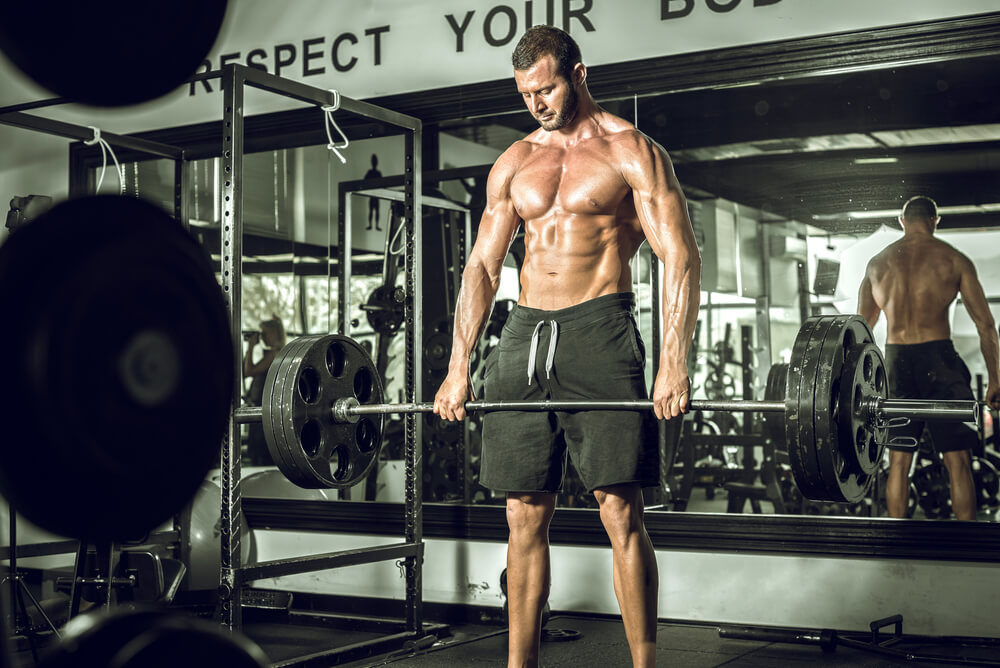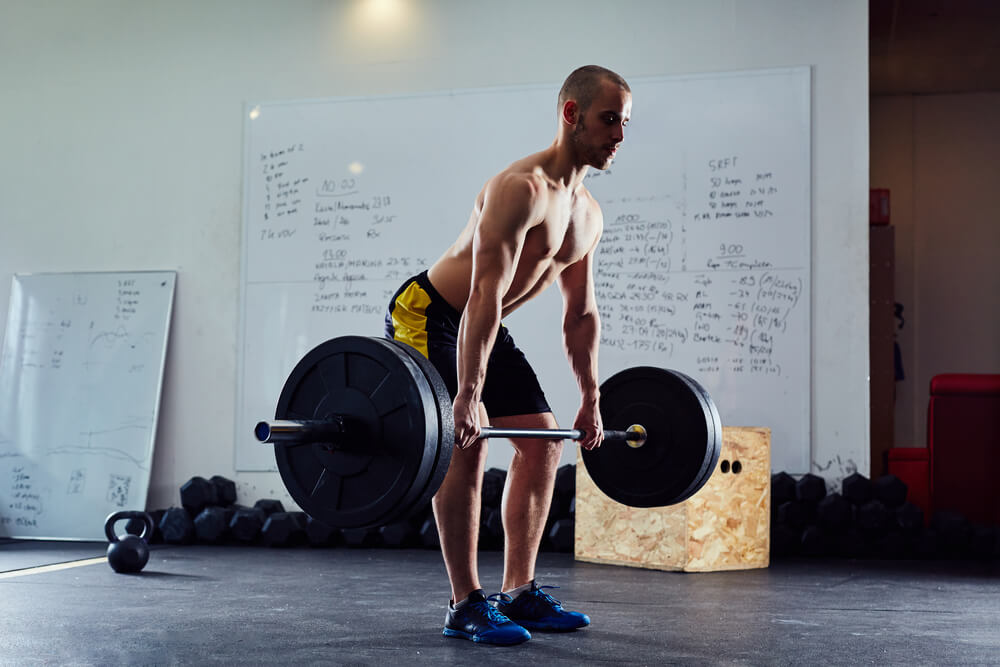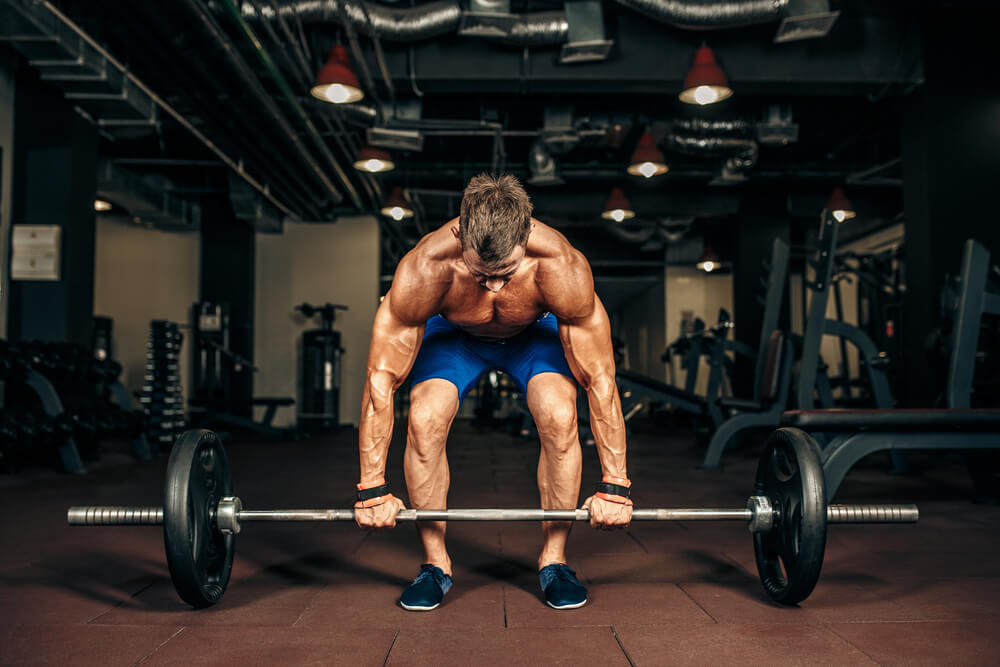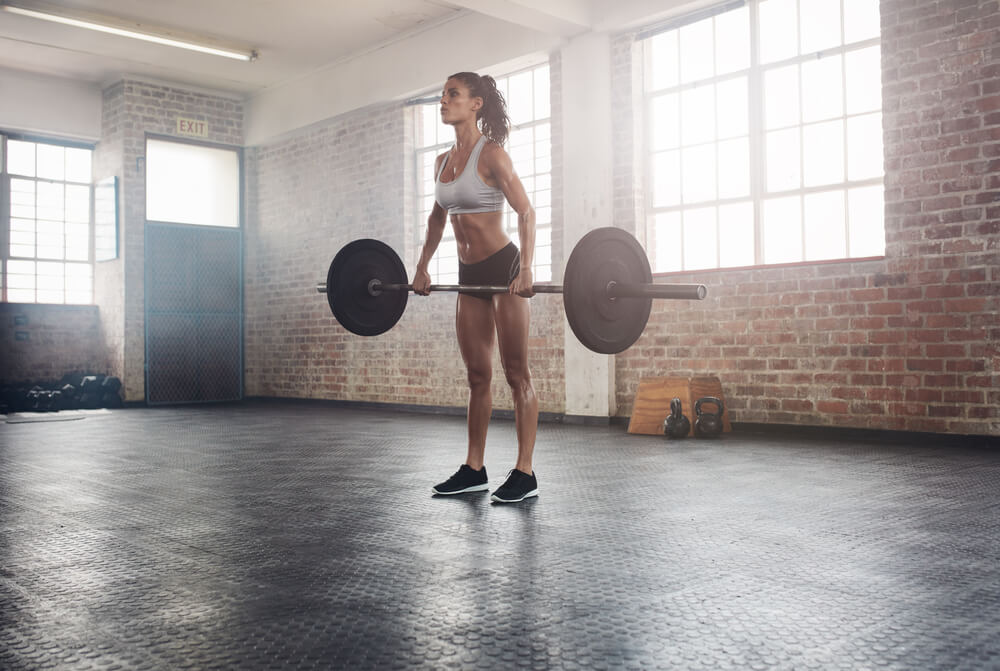You lift and you hit the gym, improving your body. You may also always be on the lookout for new lifts and workouts to bring into your routine. Today we will review the Romanian deadlift.
Maybe you keep it as a regular move, or perhaps you test it out and decide whether you like it or not.
However you go about it, you need to look towards the Romanian deadlift.
A variable of the traditional deadlift, it may be exactly what you’re looking for. Let us tell you the benefits, why you should do it, and how to perform it.
First, What’s a Deadlift?
If you’re asking this question, chances are you’re extremely green to the world of lifting, or you simply don’t know the name of the move.
Chances are, you’re the latter.
After all, if you’ve been to a gym, any gym, once in your life, you’ve seen people perform the lift. With a traditional deadlift, a lifter takes a barbell and loads it up with weight. Standing with feet right around shoulder width apart they explode up, keeping their back straight. With their back straight and tight with the hips and the shoulders pulled back, this is the top of a deadlift.
The lift is completed when the lifter lowers the weight back down. While a similar principle, the Romanian deadlift is a bit different.
The Difference Between a Deadlift and a Romanian Deadlift
In reality, you will perform at least one traditional deadlift when beginning the Romanian deadlift.
From there, the move is different and targets a different area of the body (similar regions are targeted, but your back receives the majority of the work, instead of your lower body).
The major purpose of the Romanian deadlift is to remove any static downtime. When performing a traditional lift, the energy you generate comes to a complete stop when the weights are placed back on the ground.
The Romanian lift removes this entirely by starting at the top of the lift, instead of the bottom. So, instead of lifting the barbell up towards your waist, you begin with the barbell by the waist as you lower it down.
The Romanian lift is not simply a mirror image of a regular deadlift though.
With a deadlift, you do perform a squat-like move while exploding up with the barbell. The Romanian lift almost completely takes the leg movement out of it. During the move, your legs are slightly bent in order to prevent the joints from locking up.
When you lower the barbell down it is done so with mostly your lower back and shoulders. Tension is placed on your upper thighs and gluteus, so this area of your body does receive attention.
However, as your lower body moves very little, the purpose of the lift aims at your back. By maximizing the attention placed on your back over the traditional deadlift, it does make it easier to utilize both moves in your workout routine. Combined few other lifts target the sheer number of muscles, and the same intensity, as the traditional and Romanian deadlift.
How to Perform a Romanian Deadlift
To begin the Romanian deadlift you first need to perform a traditional deadlift.
If you haven’t perfected the traditional deadlift move, feel free to check out the article devoted entirely on this fantastic muscle builder.
Make sure to have your feet hip-width apart. You should grip the barbell with an overhand grip and your hands should be about shoulder-width apart. Follow the deadlift instructions to reach the top of the deadlift move. Hold the weighted barbell at the height of the deadlift.
This is where you begin the Romanian lift.
Bend your body at the waist. Maintain a straight back throughout the lift. This is very important. Any curve in the back opens you up for potential injury. You are likely dealing with a considerable amount of weight, so poor posture can lead to back strains and other injuries. Your hips will push back as you lower the barbell.
As you lower the barbell, keep it in close proximity to your shins. Ideally, you should continue to lower the bar until the weights touch the ground, at which point you should raise yourself back up, again keeping your back straight. Now, you may find your range of motion simply does not allow you to lower the weights all the way down to the floor. Perhaps your arms are on the shorter side or you have little in way of flexibility.
Do not force your body into lowering the weight all the way down. Instead, make sure to add a stretching routine to your weekly workout.
You may want to consider yoga. Improving your back flexibility will help improve the range of motion with this (and other) lifts in the future (ExRx Network, 2015).
If you are unable to reach the floor during the lift, you may find it difficult to go from a downward motion to an upward motion without anything stopping your momentum. You can place gym mats or even weights on both sides of the floor where your weights come down. This gives you a stopping point. Just make sure the stopping point isn’t too high.
Reduce the height of yours topping point as your flexibility improves.
During the lift, squeeze your butt. This not only increases the amount of tension and activity your gluteus receive but it helps to extend your hips. When you are back in the starting position, pull your shoulders back to increase the tension placed on your upper back, shoulders, and chest. This is the completion of a single rep.
Mistakes to Avoid When Deadlifting
If you’re going to do a lift wrong, you might as well not do it at all. Doing a lift incorrectly will either lead to an injury or just not prevent you from actually receiving the gains you’re going for.
Have you ever seen the guy at the gym, holding oversized dumbbells and attempting to curl, but he’s twisting his back and contorting his entire body every which way until he’s “lifted” the dumbbells all the way up?
He just wants to be able to tell people he can curl 50 pounds with each arm when realistically his biceps are not receiving the kind of work he thinks they are getting. He’d be better off lifting 25 pounders and doing the lift correctly.
This is an example of vanity getting in the way of actual gains. Don’t be like this guy when performing the Romanian deadlift (or any lift). It’s not about the number. It’s about how much gain you receive from what you can lift.
The first mistake many make when performing a Romanian deadlift is not completing the range of motion. Essentially, someone stops well short of when the lift is designed to end. Some will end the lift when the bar reaches right around the knees. This is akin to only going halfway down with the bench press or stopping your squat well before you hit a floor parallel. Sure, it helps you “complete” the set faster, but you’re cheating yourself out of the benefits.
Why go to the gym if you’re just going to cheat?
It’s like saying your dieting when you’re eating a half dozen pints of ice cream at night. Don’t do it. Complete the range of motion to the best of your ability, and if you’re not able to completely lower the weights down to the floor just yet, add in more stretching to your weekly routine to help.
Next, make sure to maintain your deadlift technique. Just because the Romanian lift is a variation does not mean you should forget your technique altogether. Yes, there is next to no knee bending in the Romanian version and you keep your back straight. However, as you would with the traditional lift, you want to keep a flat back and your muscles tight.
One of the main benefits of the Romanian lift is you begin already holding the weight.
You may feel inclined to rest with the weight on the ground in the down position, but this allows your hamstrings and lower back muscles to rest. You want these muscles engaged at all times, so cut as much rest time out of your lift as possible by not setting the weights down. As soon as you hear and feel the clank of your weights explode back up into the starting position.
When starting out a new lift, there is nothing wrong with using a lighter weight. After all, you’re not sure how it will affect your body or how your body will react. However, a major problem with the Romanian lift is those who perform it tend to go with a lighter weight. As your hamstrings are almost always engaged due to the locking position, you work this area a great deal.
The hamstrings can handle a good amount of weight, which is why you need to go for big weight here. Essentially, try to use the same amount of weight with the Romanian variation as you would with a traditional deadlift (Stack, 2017).
Muscles Targeted By the Romanian Deadlift
The Romanian lift hits your hamstrings better than almost any other lift out there so this one of the deadlift muscles worked. Due to the next to no movement in your legs, your hamstrings are always engaged, which will set your hamstrings on fire (if you’re doing the move correctly and have heavy enough weight, you’ll begin to feel this almost instantly while first starting out with the lift).
The lift does hit the quads, of course (especially if you are able to take the weight all the way down to the ground, as the further down the weight goes the further up your legs are hit). Your gluteus will be hit, in addition to muscles in the lower back, such as the thoracolumbar fascia, your internal abdominal obliques, and several other stabilizing muscles.
As long as you contract and tighten your shoulders when you have the weight back up in the starting position you will hit this portion of your body as well (although the majority of the work comes from your lower back and lower body) (InnerBody, 2017).
Workout Routine
You want to aim for two sets of the Romanian deadlift. If at all possible, spread the two lifts throughout your workout as you perform a circuit. This way, your entire lower body can be targeted with the different lifts before you come back around. If it isn’t possible to do this, place the Romanian deadlift towards the beginning of your workout, following the standard deadlift.
The purpose of the Romanian deadlift is for maximum strength gain.
The only real way to do this is to lift big. After you complete your regular deadlift, consider using the same amount of weight. When starting out you may feel inclined to go a bit lighter as you learn the lift, which is fine, but try to increase your weight once you become accustomed to the new lift.
You don’t need to focus on a set amount of reps with this. Try to beat your personal best.
If you surpass the 10 rep mark your weight is too light and you need to increase it. As long as you follow these rules (two sets, max yourself out to exhaustion and increase weight if you can hit 10 reps) you’ll maximize your results from the Romanian deadlift.
Conclusion
As a variation of the deadlift, which is considered one of three core power lifts, the Romanian deadlift deserves your attention. It’s always important to challenge yourself and your body with new lifts.
Over time, if you just perform the same lifts and routine every single time you’re at the gym, you’ll start to see your results dwindle as your body becomes accustomed to these moves. The Romanian deadlift is a great way to switch up the traditional lift and challenge your body even further.
So what are you waiting for?
Test the move out the next time you’re lifting and see how it goes.
-Terry Asher
Terry Asher
Latest posts by Terry Asher (see all)
- Better Family – Product Review Liquid Daily 2 oz - Dec 16, 2024
- Post-Workout Recovery: The Key to Optimal Performance - Nov 25, 2024
- Pre-Workout Supplements – Everything You Need To Know - Nov 18, 2024














[…] post Romanian Deadlift – How To Perform It appeared first on Gym […]
Good read. The Romanian lift is not simply a mirror image of a regular deadlift though
Thanks for stopping by!
-Terry Asher
Your post contains a lot of useful information for me. Thank you very much for that.
Your article reflects the issue people are concerned about. The article provides timely information that reflects multi-dimensional views from multiple perspectives. I look forward to reading quality articles that contain timely information from you.
Terrific post Terry!
The RDL is a fantastic lift for building muscle, but my favorite use is for warm-up/cool-down. After all, it was originally used as a cool-down by the lift’s creator, Nicu Vlad. It’s important that while doing the RDL, the lifter maintains constant tension in the lower back, glutes, and hamstring. This will help to build muscles evenly and prevent injury.
Keep ’em coming!
Thank you Jordan and will do!
-Terry Asher
nicely explained. good article can you tell me about the diet I should take if I have a very lean physic.
Very interesting post! I really enjoy it. It very useful and helpful post. Thanks for sharing.
Hey Kavya!
Thanks for stopping by…
-Terry Asher
thanks for the post
You’re welcome…
-Terry Asher
Well, this is my first visit to your blog! Your blog provided us valuable information .You have done a marvelous job
hey I saw you on Instagram just nice workout tips and very nice looking body you have!
Thanks, I appreciate it!
-Terry Asher
very nice, thank you the post.
very nice body like a beast keep sharing the tips with us!
I have visited your website frequently and always find interesting things here. We are dealing in Overseas Education you may be interested….
Amazing article you have written a lot of information. Appreciate your point of view and please keep continue posting.
Amazing post! thanks for share this post..
[…] between traditional deadlifts, a deadlift from a small deficit, and a deadlift from your max deficit is a good way to make sure […]
The pictures are very specific as to how to hold and move your hands to get a thorough washing. Even if children get it only half right it will probably be so much better than what they are doing now.
Amazing post! thanks for share this post..
I perfectly agree.
Very nice, thank you for the post.
Your post contains a lot of useful information for me. Thank you very much for that.
The video is everything more for every gym enthusiast
Thank you very much for sharing this useful information. Thanks for sharing how you’re doing it; I’m sure the resource you provided would be useful to a lot of others.
I enjoyed reading the post. Thanks for the awesome post.
informative blog post. Thanks for sharing
I found this is very helpful content. I will definitely recommend my friends.
Woww what an amazing content
Thank you for sharing informative article, Keep sharing more
Thev most informative post.
he looks very beautiful